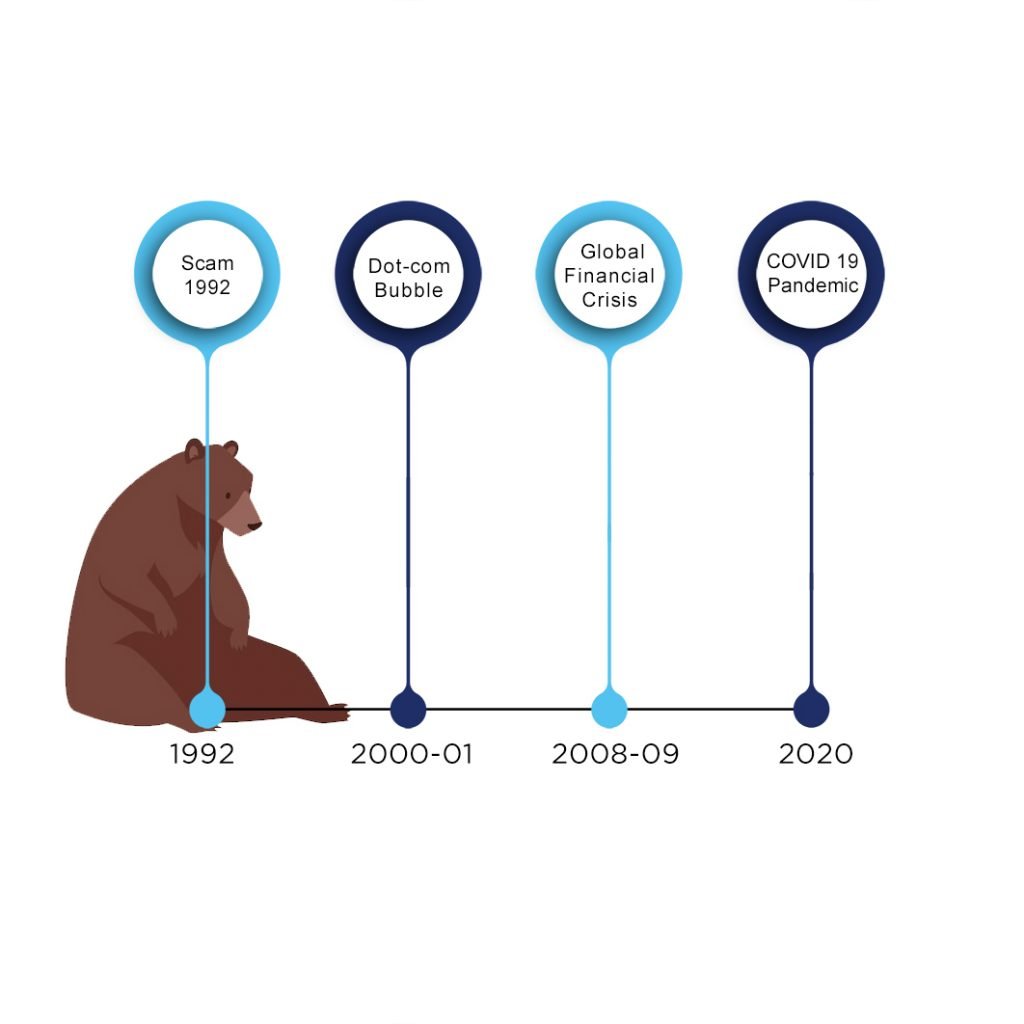A bear market is a prolonged decline in a stock market, where the index slumps 20% or more. It’s the phase where negative investor sentiments peak and the stock market eventually becomes an abyss of panic selling and capitulation. While a bear market generally lasts six months, the losses incurred by people during that time last longer. India has witnessed some of the steepest crashes in history. However, the quick-recovering economy has always emerged stronger than before, with Sensex extending to new heights.
How to invest in a bear market
For long-term value investors, the bear market is nothing but a minor setback in the compounding of their portfolio. To keep your portfolio from going into the red and to generate consistent returns, you ought to have a strategy to minimise the risk and shield your holdings from the declining market. Let’s understand what are the three effective strategies to paint your portfolio green:
1. Rebalancing the portfolio
When a prolonged bear market is confirmed, it only makes sense to safeguard your portfolio from its consequences and maintain its stability until the market recovers. To protect your capital returns, you can rebalance your portfolio diversification by allotting a larger percentage of your funds to assets that are negatively correlated with the stock markets. Some of those assets include:
- Gold
- Bonds
- Debentures
- REITs
Another option is maintaining a steady passive income by investing in dividend stocks. Dividend stocks will ensure a consistent cash flow despite the market conditions.
2. Rupee cost averaging
Rupee cost averaging was inspired by the concept of Dollar Cost Averaging, a term coined by Benjamin Graham in his book, The Intelligent Investor. The strategy aims to minimise the emotional component of investing and provide a new value-centric approach to the asset. Rupee cost averaging suggests investing the same amount of money every month in units of a mutual fund or a stock. Hence, when the market is expensive, you buy fewer units, and when the index is down, you end up buying more units. This strategy will help in averaging out the price at which you buy the asset. It works best in a bear market and helps stabilise your portfolio.
3. Investing in better-performing industries
Another effective option to survive the bear market is to shift your funds to sectors that outperform the crash. For instance, the technology sector benefited most from the covid crash. Shares like Netflix and Amazon skyrocketed while the energy sector was experiencing a downfall. Before investing in such industries:
- Consider factors like time horizon and risk appetite.
- Research well about the industry in which you invest.
- Stay updated with industry insights and emerging markets.
- Refer to resources like the Paytm money newsletter, which gives you the ins and outs of investing in the stock market.
The cycle of highs & lows
Stock markets have always been subject to fluctuations. Where investors thrive during bull markets and delve into pessimism in bear markets, the cycle of highs and lows goes around the timeline for decades. However, you should not forget your initial vision and the value associated with your investments. In the words of Warren Buffet, “Bull markets and bear markets can obscure mathematical laws; they cannot repeal them” The ups and downs are just the cycles in equity prices, but in the end, quality and performance always win.
